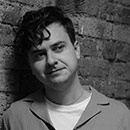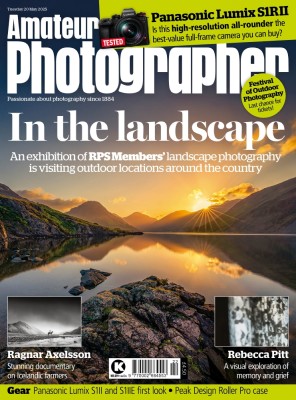Picking up one of the best used DSLRs is an ideal way to get yourself some incredible value for money. While mirrorless cameras may be all the rage, the best DSLRs still represent some of the most capable photographic tools from the past decade, and prices have come down so much that many of them represent much better value than newer cameras. We’ve done the hard work for you by picking out the DSLRs that provide the best value on the second-hand market right now.
We’ve stuck to the big names in the world of DSLRs, which are of course, Canon, Nikon and Pentax – though you’ll also find one of Sony’s Alpha DSLT (Single Lens Translucent) cameras on the list, which resemble DSLRs in form and handling. All these cameras have been tested and reviewed by our team, and we’ve ordered them roughly by price to help you figure out the right camera for your budget.
With huge lens ranges, tactile handling, optical viewfinders and rugged bodies, DSLRs are still the cameras of choice for many great photographers. We’ve got a lot of choices on this list, so don’t waste any time in getting stuck into our guide to the best used DSLRs to buy.
The best used DSLRs – quick list
Looking for the best deal on a used DSLR? Not only will you find the best DSLRs, but also some of the best deals, as our ‘Buy now’ buttons are set up to automatically take you to the best prices from trusted retailers. You’ll also find a list of other retailers below each camera, so you can find the right deal for you.
- Cheapest Nikon DSLR: Nikon D5100 – Buy now
- Cheapest Canon DSLR: EOS 600D/EOS Rebel T3i – Buy now
- Cheap beginner DSLR: Canon EOS 1200D / Rebel T5 – Buy now
- Cheapest Pentax DSLR: Pentax K-50 – Buy now
- Cheapest Full-Frame DSLR: Canon EOS 5D – Buy now
- Cheapest Full-Frame Nikon DSLR: Nikon D700 – Buy now
- Cheapest fast APS-C DSLR: Canon EOS 70D – Buy now
- Cheapest fast, high-resolution DSLR: Sony A77 II – Buy now
- Cheapest higher-end Pentax: Pentax K-3 – Buy now
- Cheapest sportier Canon DSLR: Canon EOS 7D Mark II – Buy now
- Cheapest pro-spec full-frame DSLR: Nikon D3 – Buy now
- Fast, budget APS-C workhorse: Nikon D7200 – Buy now
- Cheapest Nikon full-frame DSLR with advanced video: Nikon D600 – Buy now
- Cheap EOS 5D Mark II alternative: Canon EOS 6D – Buy now
- Cheapest high-resolution full-frame DSLR: Nikon D800 – Buy now
- Fast APS-C workhorse with powerful AF: Nikon D7500 – Buy now
- Full-frame EOS power-house: Canon EOS 5D Mark III – Buy now
- Cheapest Nikon pro-spec APS-C DSLR: Nikon D500 – Buy now
- Highest resolution Canon DSLR: Canon EOS 5DS R – Buy now
Why you can trust Amateur Photographer
We spend many hours testing every product we recommend, in detail, in a variety of situations and shooting scenarios, and only use experts for our reviews, so you can be sure that you’re getting the best products. Find out more about our expert writers.
Cheapest Nikon DSLR: Nikon D5100 – from $250 / £135
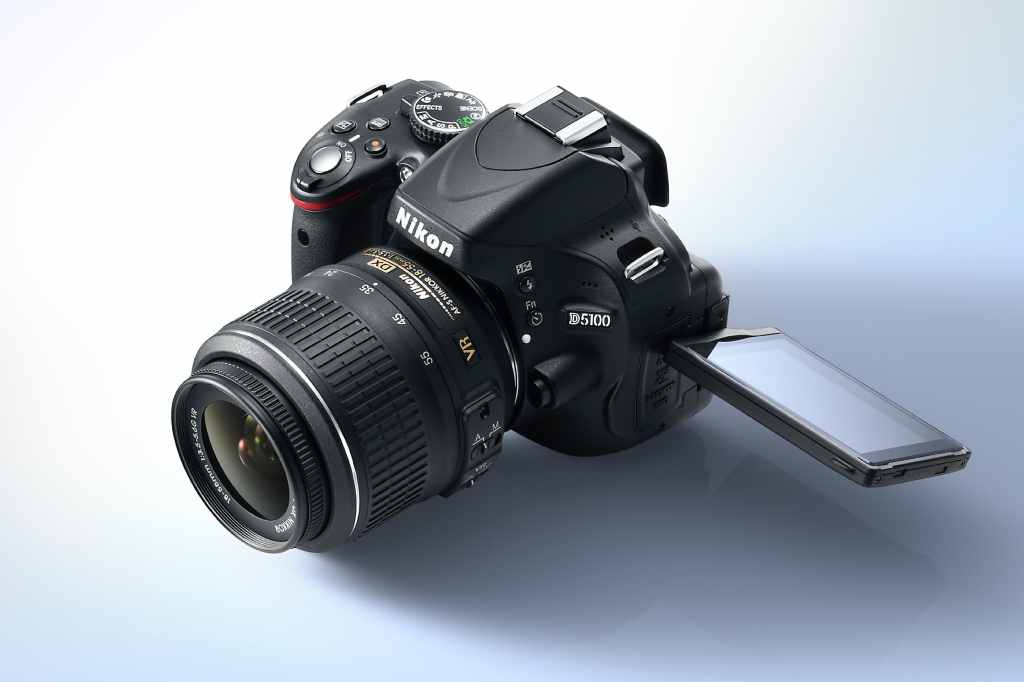
Amateur Photographer verdict
The D5100 is a nifty little camera with solid specs despite its age. It offers an affordable option if you are just starting out on your photographic journey and you don’t want to break the bank.- Really cheap
- Vari-angle screen
- Easy to use
- Slower focusing
- Small viewfinder
At a glance:
- 16.2MP APS-C CMOS sensor
- Nikon F lens mount (APS-C)
- 4fps continuous shooting
- ISO 100-6400 (exp. 25,600)
Upon its release in 2011, the Nikon D5100 was an upper entry-level DSLR for those seeking something more advanced than the more basic D3100. While its core hardware undoubtedly shows its age now, the D5100 remains a practical and easy-to-use camera that’s capable of great image quality.
The D5100 is built around a 16.2MP APS-C CMOS sensor and Nikon’s EXPEED 2 image processor – the same components found inside the much more advanced (and proportionally more expensive) D7000, also released in 2011. So, while the D5100’s 16MP resolution doesn’t compare with that of the 24MP APS-C sensors common to many contemporary DSLRs (including the D5100’s direct descendant – the D5600), overall image quality is still very good.
Better still, while the D5100 and 18-55mm kit lens package would have cost around £750 at the time of its launch, we’ve found that second-hand camera bodies in ‘good’ condition can be picked up for around £164 from MPB.com. That’s quite a saving, and gives you scope to shop for used lenses and stay within a £250-300 budget.
Read our original review of the Nikon D5100
Cheapest Canon DSLR: EOS 600D/EOS Rebel T3i – from $300 / £140

Amateur Photographer verdict
The EOS 600D is another ideal entry level option for someone starting out. It has fast autofocus, great image quality, and there are a wide range of lenses available for it.- Vari-angle LCD
- Full HD video
- Fast AF
- Only 9 AF points
- Average Dynamic range
At a glance:
- 18MP APS-C CMOS sensor
- Canon EF-S lens mount
- 3.7fps continuous shooting
- ISO 100-6400 (exp. 12,800)
The Canon EOS 600D, originally released in 2011, is now excellent value for money second-hand. Benefitting from a vari-angle rear LCD display, the EOS 600D makes light work of shooting from awkward angles, while the 9-point AF system is fast and accurate; if a little basic compared to modern cameras.
Video capabilities extend to a respectable 1080p Full HD at 30fps, while the pop-up flash doubles up as a wireless commander unit should you want to get creative with off-camera flash. Alternatively, there is the beginner-friendly Basic+ mode that takes control of key settings.
If you’re looking for a rough equivalent to the Nikon D5100 but would prefer to invest in the Canon lens system, the EOS 600D is a great starting point. Even though some of its features have aged, the image quality generated by the sensor is excellent.
The EOS 600D commands roughly the same second-hand price as the D5100, though reaches a slightly higher maximum price for the best-condition models.
Using the Canon EF-mount, there is a massive choice of Canon EF mount lenses.
Read our original review of the Canon EOS 600D
Best cheap beginner DSLR: Canon EOS 1200D / Rebel T5 – from $220 / £150
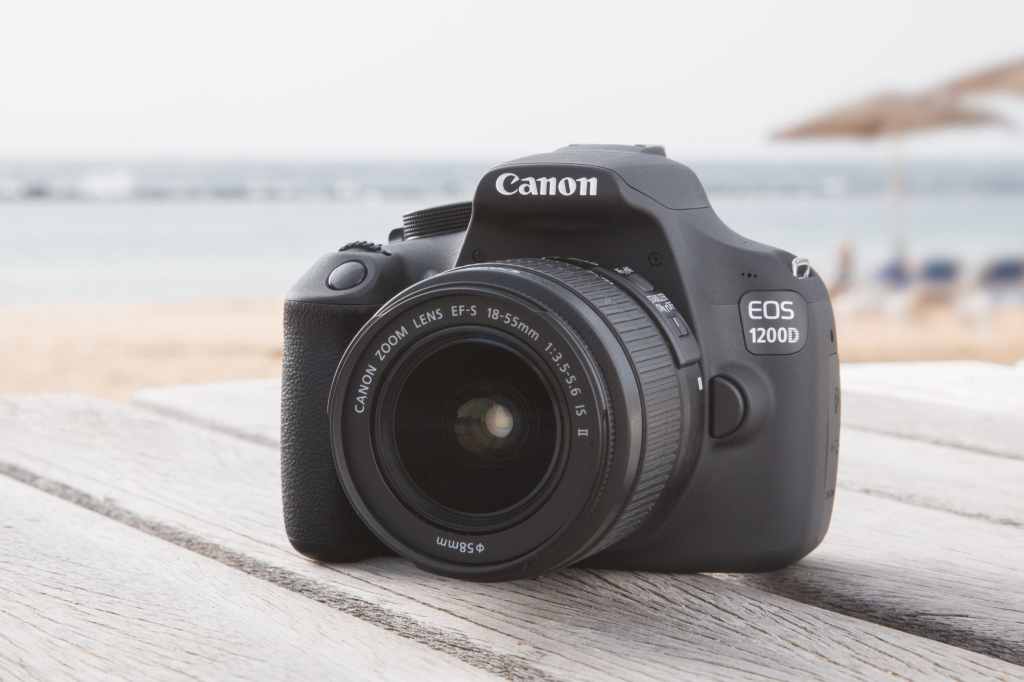
Amateur Photographer verdict
A reasonable entry level DSLR for a first time user, with simple handling and accurate and speedy autofocus system, even in low light.- Easy to use
- Fast autofocus
- Very cheap
- Low resolution LCD
- Only 9 AF points
At a glance:
- 18MP APS-C CMOS sensor
- Canon EF-S lens mount
- 3fps continuous shooting
- ISO 100-6400 (exp. 12,800)
Beginner photographers can pick up a hell of a bargain if willing to shop second-hand – a case in point is the excellent EOS 1200D. Going for about a third of its original asking price, the EOS 1200D has retained a reputation as a solid, do-everything DSLR for beginners.
While you only get a burst mode of 3fps, the autofocus system is fast and accurate in a way that punches above its weight, and the low-light performance impresses. Canon rates the battery of the EOS 1200D to last around 500 shots, which should be fine for general day-to-day shooting. You can pick up a spare LP-E10 if you’re worried, though be aware this will cost around £50.
The EOS 1200D was launched into a crowded market, but the passage of time has been kind to it, and the prices you’ll find it listed at make it an excellent choice of first camera – a great gift for someone who’s starting a photography course, perhaps. A 1200D in excellent condition can be easily found for around £150, and you won’t have trouble finding a good Canon prime for less than £80.
Read our original review of the Canon EOS 1200D.
Cheapest Pentax DSLR: Pentax K-50 – from $220 / £180
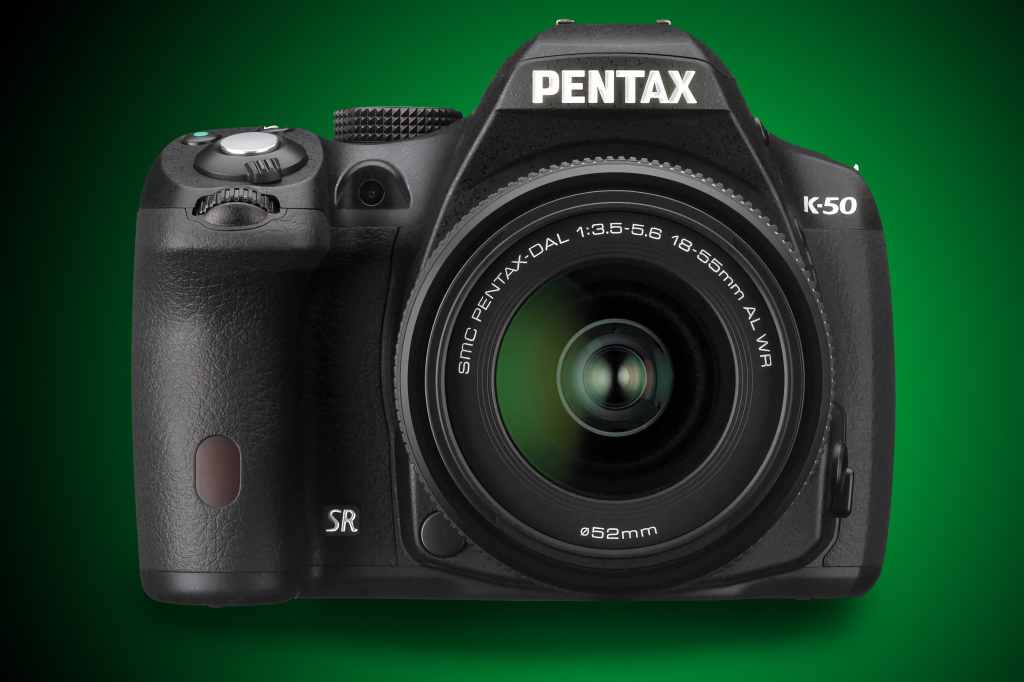
Amateur Photographer verdict
A camera that any enthusiast photographers will enjoy using, it is strong and weather-sealed. It delivers good image quality and a great amount of detail recoverable from the shadow areas.- Weather-sealed
- Lots of cheap K-mount lenses
- Sensor shift and Astro-tracer function
- Only 11 AF points
At a glance:
- 16.28MP APS-C CMOS sensor
- Pentax K lens mount
- 6fps continuous shooting
- ISO 100-51,200
Pentax’s reduced market share and brand recognition in the DSLR world means its cameras can often be picked up for a good deal less than their Canon and Nikon equivalents. Enter the Pentax K-50, a highly capable enthusiast’s DSLR that’s often listed in ‘good’ condition or better for as little as £144. With Pentax’s impressive weatherproofing that features 81 weather seals, this is a great DSLR for splashing about in the mud and the wet.
Pentax has lots of weather-sealed lenses too – though it’s worth double-checking. Look for ‘AW’ or ‘WR’ in the lens name to be sure. Another thing that Pentax proved an early adopter of was image stabilisation, and even though the K-50 came out in 2013, it still sports an effective sensor-shift image stabilisation system.
This system also powers other cool functions, like the horizon-correction feature that keeps your horizontals straight, and the AstroTracer for astrophotography – though be aware this requires a Pentax GPS UNIT O-GPS1 or O-GPS2. The former can be picked up second-hand for about £60.
Read our original review of the Pentax K-50
Cheapest Full-Frame DSLR: Canon EOS 5D – from $250 / £250

Amateur Photographer verdict
A good entry point into full-frame photography at low cost. 12MP is considered low by today’s standards, so don’t expect to crop in too much or print in large size.- Robust, hard-wearing body
- Excellent image quality at low ISO
- Affordable
- Only 12.8 MP
- No video
- Struggles in low light
At a glance:
- 12.8MP full-frame CMOS sensor
- Canon EF lens mount
- 3fps continuous shooting
- ISO 100-1600 (exp. 50-3200)
Released in 2005, Canon’s original EOS 5D is credited with being the first affordable full-frame DSLR to hit the market. While a brand new 5D body cost around £2,500 at the time of its launch, these days, it’s possible to source a second-hand example in good condition for around £250.
Given its age, it should come as no great surprise to find that many of the 5D’s core specs – such as its 9-point AF module and 2.5in/233k-dot LCD display – look fairly out-of-date by modern DSLR standards.
That said, the 5D’s 12.8MP sensor is still capable of great image quality. It’s probably not one for beginners, or for people shooting challenging moving subjects, but if you have some shooting experience and want full-frame on a budget, this is a compelling choice.
Bear in mind, though, that the 5D does not shoot video – this feature would arrive on EOS SLRs with the revolutionary 5D Mark II. A good-condition Canon EOS 5D should be priced for £199 or less. They aren’t super-common, but do appear.
Using the Canon EF-mount, there is a massive choice of Canon EF mount lenses.
Read our review of Canon EOS 5D
Cheapest Full-Frame Nikon DSLR: Nikon D700 – from $244 / £230-300
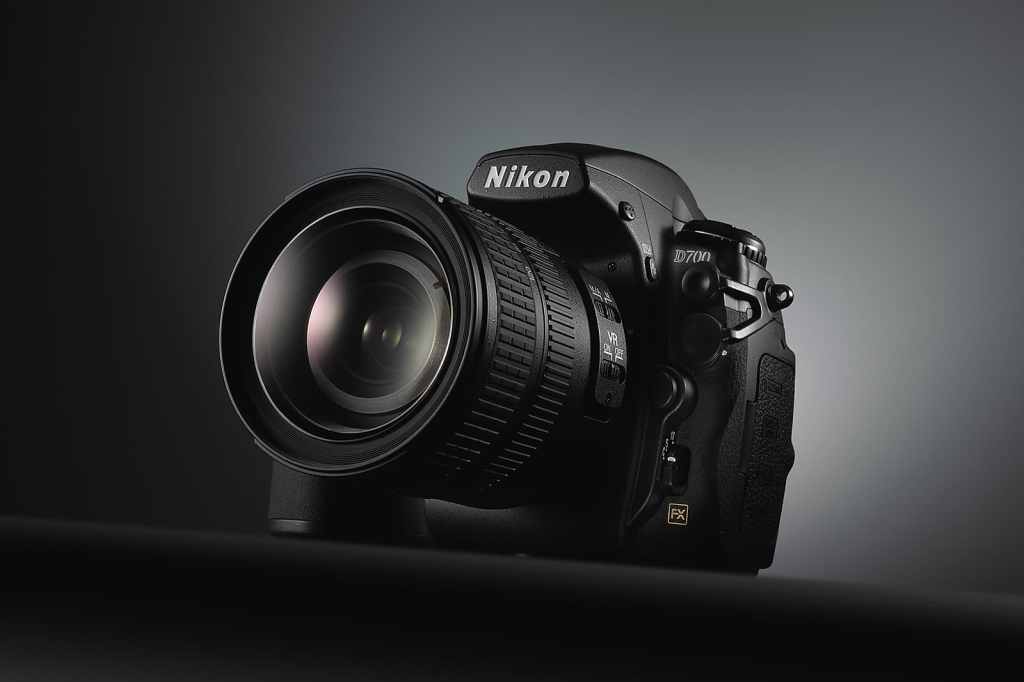
Amateur Photographer verdict
Pixel count and AF working range lags far behind today’s standard, but if you are after a full frame weather sealed camera with more autofocus points than the models above, the D700 is for you.- 51 autofocus points
- Robust build
- Good battery life
- Noisy shutter
- Single CF card slot
- No video
At a glance:
- 12.1MP full-frame CMOS sensor
- Nikon F lens mount
- 5fps continuous shooting
- ISO 200-6400 (exp. 100-25,600)
Announced in 2008, the D700 was essentially Nikon’s answer to the phenomenally popular Canon EOS 5D. Built around the same 12.1MP full-frame CMOS sensor used in the then-flagship Nikon D3 DSLR, the D700 further benefits from a 51-point AF system, a pop-up flash that can be used as a commander off-camera Creative Lighting System, and weather-sealed magnesium alloy construction.
Two things to note are that the D700 doesn’t provide any video recording functionality, and only comes with a single CF-type card slot, which means it cannot take regular SDXC cards. Otherwise, the D700 remains an exceptionally capable camera. Image quality is generally very good, especially at low ISOs. It produces decent results even up to ISO 12,800.
A rarity for cameras of its time! If you want to stick above ‘good’ condition, the minimum you’ll currently be paying is around £230, and the prices top out at about £300.
Using the Nikon F mount there is a massive choice of Nikon F lenses
Read our ‘Second Hand Classic’ review of the Nikon D700
Cheapest fast APS-C DSLR: Canon EOS 70D – from $300 / £160-£300

Amateur Photographer verdict
With phase detection AF and 19 cross type focus points, it acquires focus faster. An articulating touchscreen and full HD video capabilities make the 70D more versatile and a worthy contender.- 20MP sensor
- Wifi compatible
- Fast focusing
- Colour noise in JPEGs
- Restricted dynamic range
At a glance:
- 20.2MP APS-C CMOS sensor
- Canon EF-S lens mount
- 7fps continuous shooting
- ISO 100-12,800 (exp. 25,600)
From the EOS 50D to the more recent 90D, the double-digit line of Canon DSLRs for enthusiasts has retained a reputation for providing great value for money. The EOS 70D is not only great for stills, but also punches above its weight for video – this and the EOS 80D and 90D that succeeded it all proved a hit with YouTubers.
It was the first DSLR to showcase Canon’s revolutionary Dual Pixel CMOS AF technology. The small jump in resolution from the 60D went virtually unnoticed, as all attention was drawn to the way it could perform on-sensor phase-detection focusing when using live view and shooting video to improve focus acquisition and response.
The 70D’s sensor and DIGIC 5+ processor combine to offer a sensitivity range of ISO 100-12,800 (extendable to ISO 25,600), meanwhile it can shoot continuously at up to 7fps.
The AF system is borrowed from Canon’s original EOS 7D and consists of 19 points, all of which are the sensitive cross-type. It doesn’t provide a joystick to easily nudge the AF point around the frame like the newer EOS 90D, but users do get a dedicated button on the camera’s top plate to toggle through the AF modes.
The 70D’s 3in, 1.04m-dot articulated touchscreen is particularly useful when it comes to creative framing, and above it is a pentaprism-style optical viewfinder that can display a small level indicator to avoid skewed shots. As is usually the case with more-advanced DSLRs, the 70D sports a small LCD display on the top of the camera providing a quick reference point to key camera settings.
With regard to exposure modes, the 70D is served by the usual quartet of PASM modes, along with a fully automatic Auto mode and a range of specific Scene modes for less-experienced users. Finally, the EOS 70D can be picked up very reasonably indeed at a variety of outlets.
Read our original review of the Canon EOS 70D
Cheapest fast, high-resolution DSLR: Sony A77 II – from $349 / £319
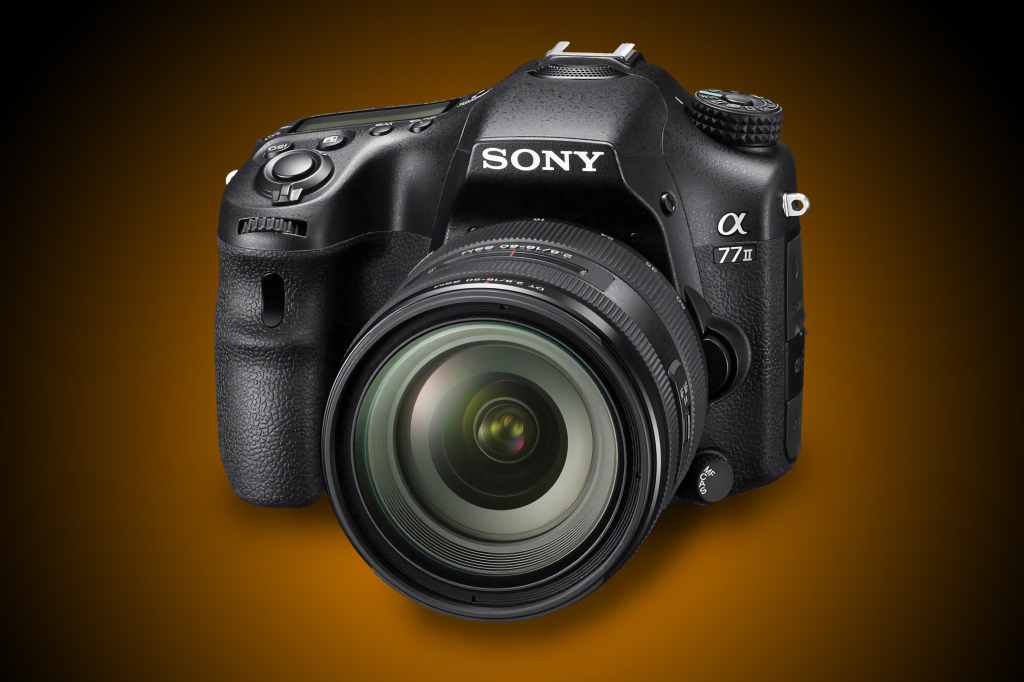
Amateur Photographer verdict
With 12fps shooting speed and 24 MP, it will appeal to sports and wildlife photographers. It tracks fast-moving subjects with ease.- Advanced 79 point AF
- Customisable menu
- Easy handling
- 0.3EV loss due to translucent mirror
- No GPS
- In-camera noise reduction can be harsh at higher ISO
At a glance:
- 24.3MP APS-C CMOS sensor
- Sony A lens mount
- 12fps continuous shooting
- ISO 100-25,600 (exp. 50)
The Sony A77 II was introduced as the ‘king of APS-C’ back in 2014, a time when Sony was pretending it was still committed to the future of A-mount cameras and lenses. With that said, the fact that most DSLR lines are now winding down makes the A-mount feel like less of an ignominiously dead end than it did a few years ago, and realistically you won’t have trouble finding a decent set of A-mount lenses second-hand – probably for more reasonable prices than Canon EF or Nikon F.
The Sony A77 II is not technically a DSLR. It’s an SLT (single lens translucent) camera with a translucent mirror and an electronic viewfinder. But it looks and feels like a DSLR in the same way a duck quacks like a duck, so we’re counting it.
And frankly, it’s a pretty impressive camera at the average used price of up to £344 or so – 12fps continuous shooting is one of the fastest burst rates in this entire guide, and that generous resolution of 24.3MP is great for printing images. A-mount may be dead, but there’s life yet in the A77 II.
Read our original review of the Sony A77 II
Cheapest higher-end Pentax: Pentax K-3 – from $450 / £350
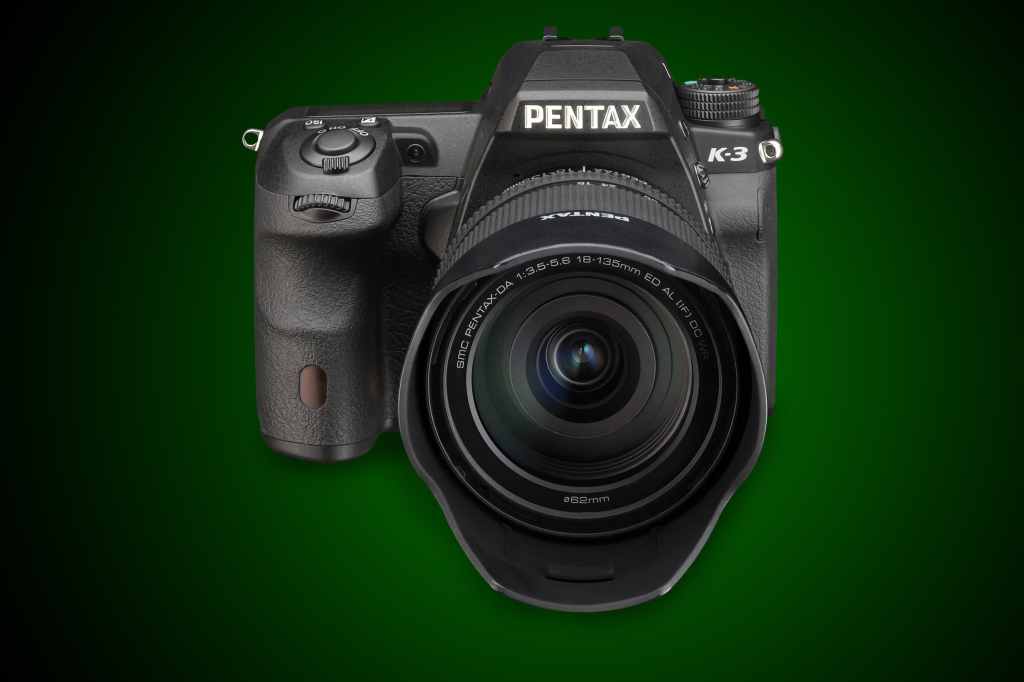
Amateur Photographer verdict
Metering is little on the dark side but images are full of detail. It has a tactile weather sealed body, and you can find lots of cheap K-mount Pentax lenses second hand.- 23MP sensor
- Lots of K-mount Pentax lenses
- Dual SD card slot
- No WIFI
- Noisy AF
At a glance:
- 23.35MP APS-C CMOS sensor
- Pentax K lens mount
- 8.3fps continuous shooting
- ISO 100-51,200
The Pentax K-3 isn’t as flashy as many recent DSLRs, but it’s a rugged and highly capable camera that does a good job in most conditions. Its high-quality 23.25MP APS-C sensor uses no anti-aliasing filter and can resolve an impressive level of detail.
You get a solid 100-51,200 ISO range for low-light work, and a continuous shooting rate of 8.3fps, which really is punching for a camera at this price point. Pentax was an early adopter of weather-sealing, and this DSLR will stand up to the worst a British winter has to offer and come out smiling. This does make it a little heavier than you might expect for a crop-sensor camera, but Pentax does offer a fair few lightweight prime lenses to help keep your set-up slim.
Other features include sensor-shift stabilisation, as well as dual SD card slots. Subsequent Mark II and Mark III versions have helped drive down the second-hand price of this model, and you can find ‘like new’ models for less than £400 at reputable used dealers.
Have a look at the best Pentax K-Mount lenses
Read our original review of the Pentax K-3
Cheapest sportier Canon DSLR: Canon EOS 7D Mark II – from $476 / £428
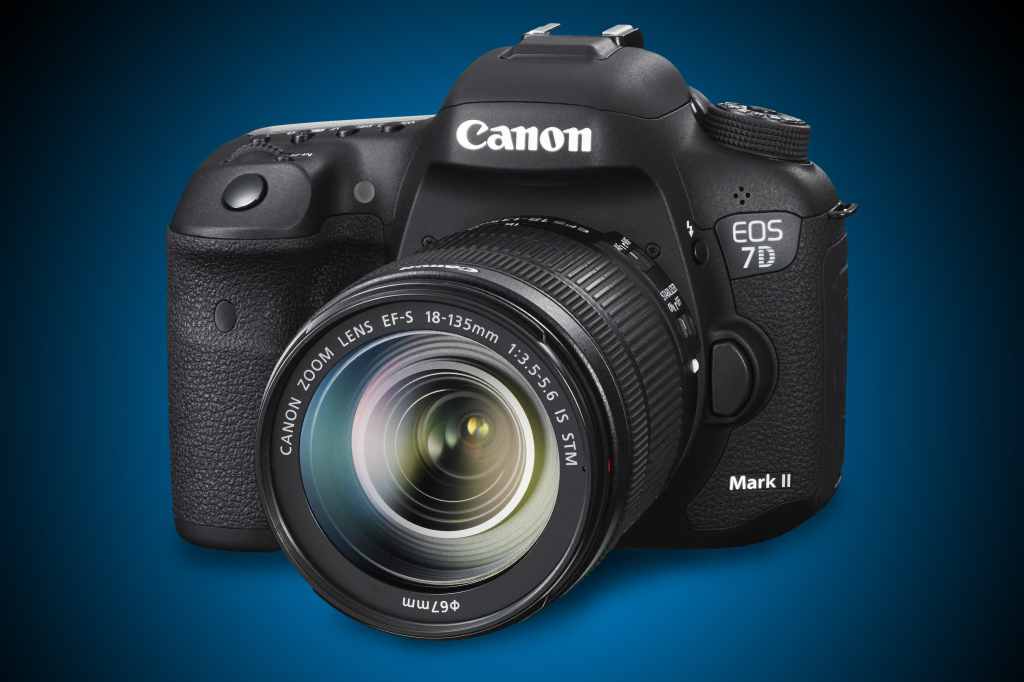
Amateur Photographer verdict
The 7D M II crop sensor paired with telephoto lenses will give more reach, and the ultra-fast autofocus, good image quality and high ISO performance will appeal to wildlife and sports shooters.- Fast continuous shooting
- 65 cross type AF points
- No WiFi
- No touchscreen or tilting LCD
At a glance:
- 20.2 APS-C CMOS sensor
- Canon EF lens mount
- 10fps continuous shooting
- ISO 100-16,000 (exp. 51,200)
The Canon EOS 7D Mark II was introduced in 2014. It’s a nippy camera, inheriting features from Canon’s sports range. Canon’s renowned Dual Pixel sensor delivers good Live View AF, and there are 65 cross-type AF points for viewfinder AF with Intelligent Tracking and Recognition (iTR) to give improved subject tracking. Its drive can rattle along at 10fps, and when shooting RAW, you’ll get around 30 shots before buffering.
Weather-sealing is also quite robust, and having dual SD slots is no bad thing. They are also CompactFlash slots, on the off-chance you still have one of those knocking about. As is common with second-hand buying, the age of this camera does mean it’s missing a few features that these days are considered standard.
For starters, there’s no built-in Wi-Fi, and the rear LCD is both fixed in place and lacking touch-sensitivity. The 7D Mark II was £1,599 on launch, and now you can nab one for up to £520. Lots are available in top-tier condition from reputable suppliers.
Read our original review of the Canon EOS 7D Mark II
Cheapest pro-spec full-frame DSLR: Nikon D3 – from $575 / £279
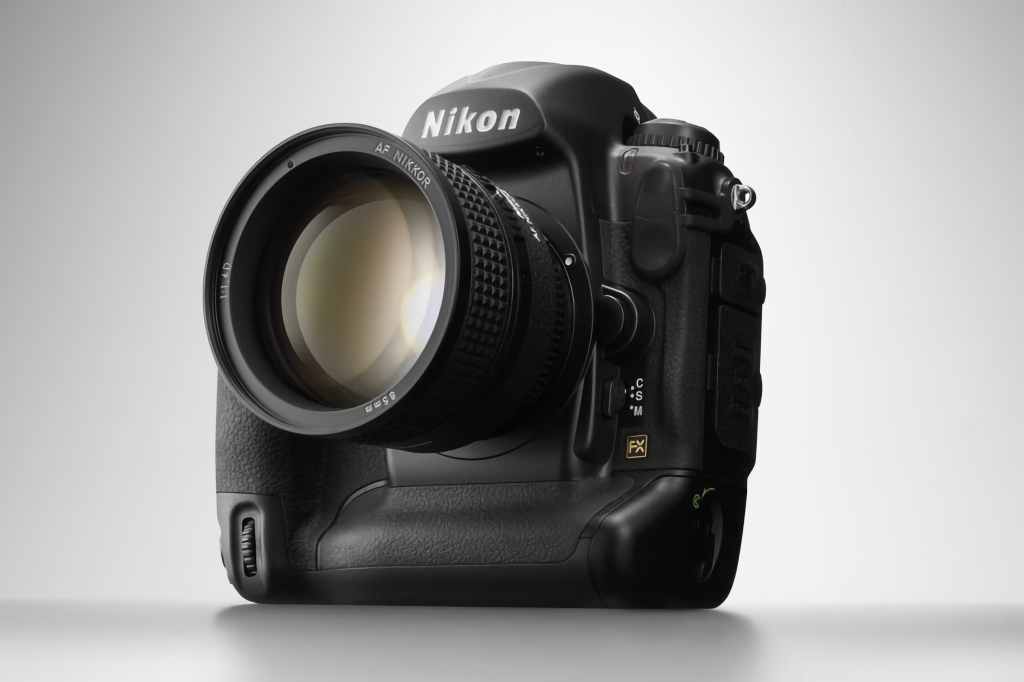
Amateur Photographer verdict
12 MP may seem too low today but, backed with a full-frame sensor and EXPEED processor, the D3 is more than capable of delivering professional quality and speed.- High shutter rating
- 9fps continuous shooting
- Fast buffer
- Live-view mode
- Only 12 MP
At a glance:
- 12MP full-frame CMOS sensor
- Nikon F lens mount
- 9fps continuous shooting (11fps cropped)
- ISO 200-6400 (exp. 100-25,600)
The Nikon D3 was a milestone – the first full-frame Nikon DSLR. Nikon called its new sensor ‘FX-format’, a name that would live on into its mirrorless Z cameras. Pitched at professionals, the D3 used the new EXPEED processor to deliver 9fps continuous shooting. Another first for the D3 was live view mode, allowing photographers to see what the camera was seeing in real time via the rear LCD screen.
It was pitched as a workhorse camera, with a focus on speed – even at the time, the 12MP resolution was considered a little on the low side, but it helped the processor keep up with the action. The D3’s magnesium-alloy body is rated for an impressive 300,000 shutter actuations, so you can be more forgiving when assessing whether a used body is offering good value for money.
Examples with considerably fewer actuations can be found for around £359. Frankly, long in the tooth as it may be, the Nikon D3 is a hell of a camera to pick up for less than four hundred quid.
Fast, budget APS-C workhorse: Nikon D7200 – from $588 / £429
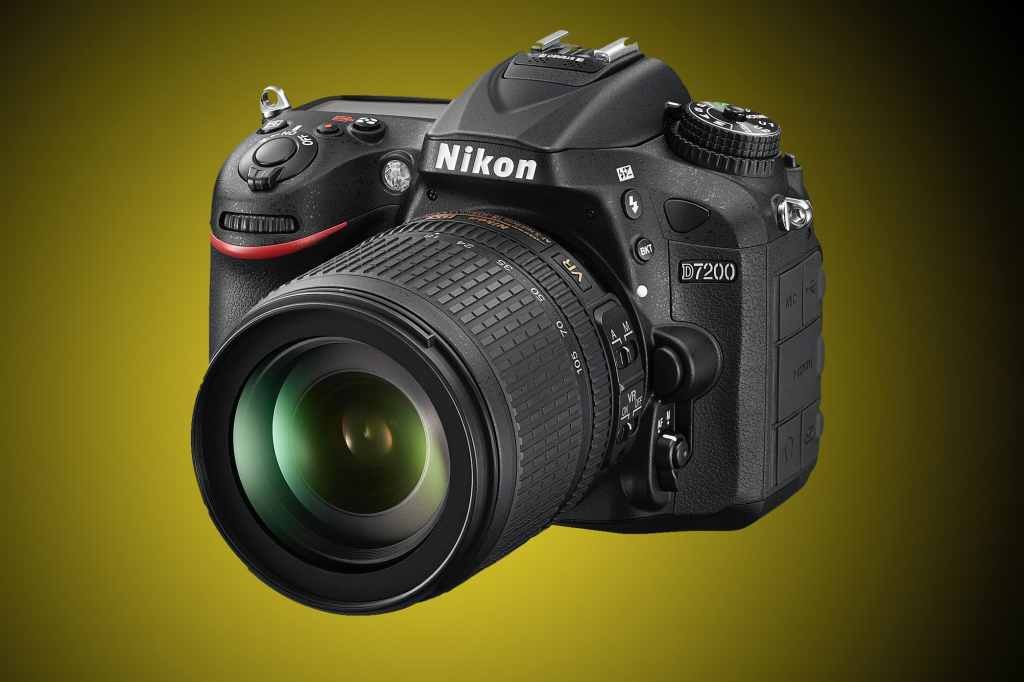
Amateur Photographer verdict
A good set of well positioned control buttons make it quick and easy to change settings. Images have a very good dynamic range and hold up rather well at higher ISO sensitivities.- Quick AF system
- 51 AF points
- NFC connectivity
- No articulation or touchscreen
At a glance:
- 24.2MP APS-C sensor
- Nikon F lens mount (APS-C)
- 6fps continuous shooting
- ISO 100-25,600 (exp. 102,400)
When the Nikon D7200 was launched in 2015, it was the natural successor to the D7100. It slotted in between Nikon’s upper entry-level DSLR, the D5500 and the company’s full-frame DSLR, the D750. Though it wasn’t a radical upgrade on its predecessor, it became popular with enthusiasts who wanted a reliable workhorse that could compete against other impressive APS-C DSLRs, such as the Canon EOS 7D Mark II.
The D7200 is built around a 24.2MP CMOS sensor and EXPEED 4 image processor. This combination provides a sensitivity range of ISO 100-25,600. It can be expanded to ISO 51,200 and ISO 102,000, however, these settings record in black & white only. Whereas the D7100 had a measly buffer performance, the D7200’s is much improved, capable of recording 18 14-bit lossless compressed raw files and over 100 JPEGs at its maximum 6fps burst rate.
Finally, the D7200 is a common sight on the second-hand market, so you shouldn’t struggle too hard to find a decent example.
Read our original review of the Nikon D7200
Cheapest Nikon full-frame DSLR with advanced video: Nikon D600 – from $429 / £272
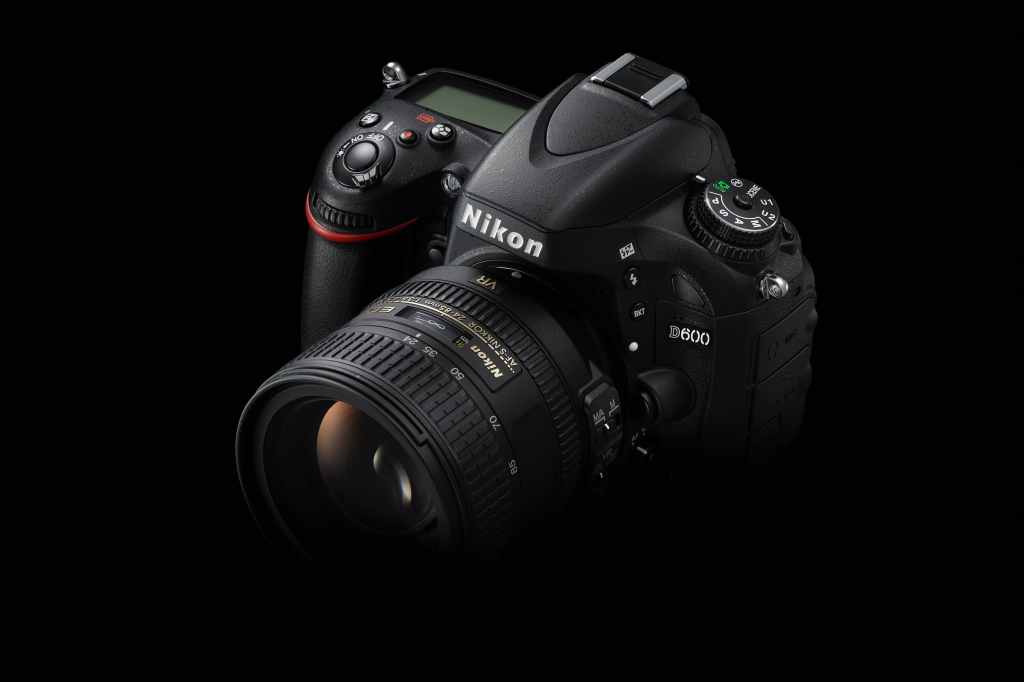
Amateur Photographer verdict
As an all-round camera for true enthusiasts, the D600 makes perfect sense. It handles well, navigation is intuitive and the viewfinder is nice and bright. Images are well detailed and low in noise.- 24 MP full frame sensor
- 39 AF points
- Weather-sealed
- No built in WiFi
- No manual options for video
At a glance:
- 24.3MP full-frame CMOS sensor
- Nikon F lens mount
- 5.5fps continuous shooting
- ISO 100-6400 (50-25,600)
At the end of 2012, the D600 was the cheapest full-frame DSLR in Nikon’s range, slotting in just below the semi-professional D800. The 24.3MP full-frame sensor is capable of excellent image quality, while the 39-point phase-detection AF system is reliable.
For getting creative with off-camera flash, the D600’s built-in flash can be used as a command unit via Nikon’s Creative Lighting System. In terms of size and build quality, the D600 remains one of the smaller full-frame DSLRs available and also benefits from magnesium alloy top and back panels alongside dust- and water-sealing.
The D600 is also decent for video, shooting Full HD video at 30p, uncompressed via HDMI. It’s got mic and headphone ports for monitoring and recording audio – a lot of these features were borrowed from the more expensive D800.
AP’s inside guide to shooting video is here
Read our original review of the Nikon D600
Canon EOS 6D – from $458 / £353 (cheaper alternative to EOS 5D Mark III)
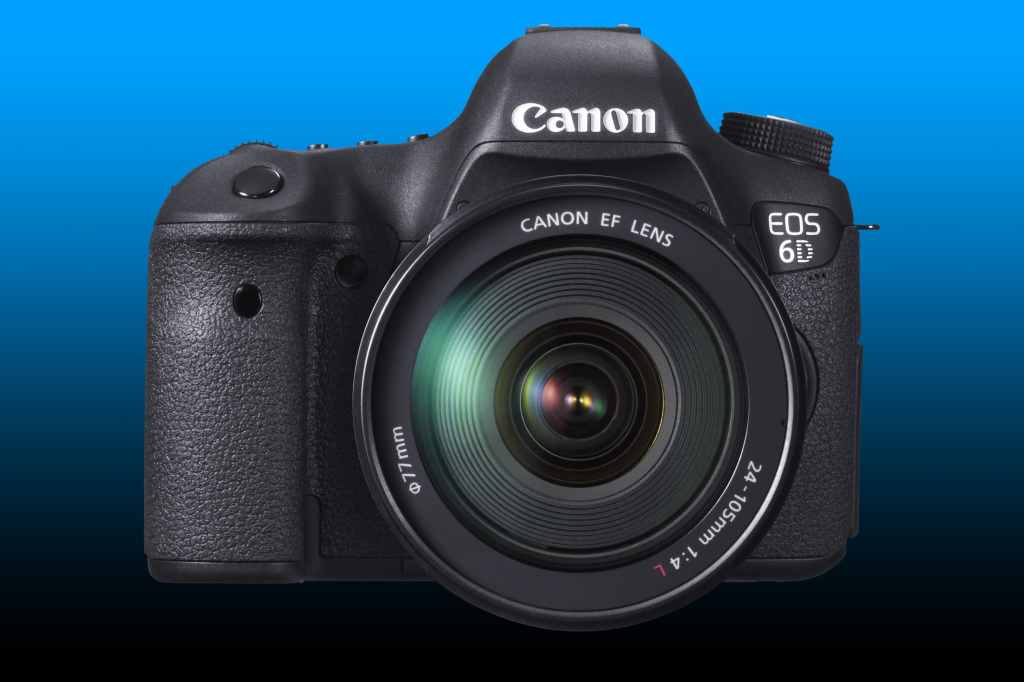
Amateur Photographer verdict
It’s a very capable DSLR for a range of subjects, with an impressive noise response, but its weakness is its burst rate. At 4.5fps isn’t ideal for photographing high-speed action or sport.- Excellent battery life
- Sealed against dust and moisture
- Intuitive layout of controls
- No AF joystick
- No vari-ange screen
- Single SD card slot
At a glance:
- 20.2MP full-frame CMOS sensor
- Canon EF lens mount
- 4.5fps continuous shooting
- ISO 100-25,600 (exp. 50-102,800)
Announced at Photokina 2012 and released a couple of months later, the EOS 6D was marketed as a smaller and more affordable alternative to the hugely popular EOS 5D Mark III. Fulfilling this brief, the 6D borrows hardware from the 5D Mark III while also bringing some of its own to the table. For example, while the 5D Mark III was built around a 22.3MP full-frame CMOS sensor, the 6D instead employs a 20.2MP chip.
However, both cameras share the same DIGIC 5+ image processor, and both provide a native sensitivity range of ISO 100-25,600 that can be expanded to the equivalent of ISO 50-102,800. It was released with a body-only price of £1,680 and it’s now possible to source a second-hand 6D in ‘excellent’ condition with a shutter count of less than 9,000 for just over £400.
That gives you £80 to spend on a lens (enough for a decent-condition EF 50mm f/1.8 II), and voila, a full-frame DSLR starter kit is yours for less than £500. That’s a much better bang for your buck than buying a new mid-range camera off the shelf.
Read our ‘Second Hand Classics’ review of the Canon EOS 6D
Cheapest high-resolution full-frame DSLR: Nikon D800 – from $539 / £328
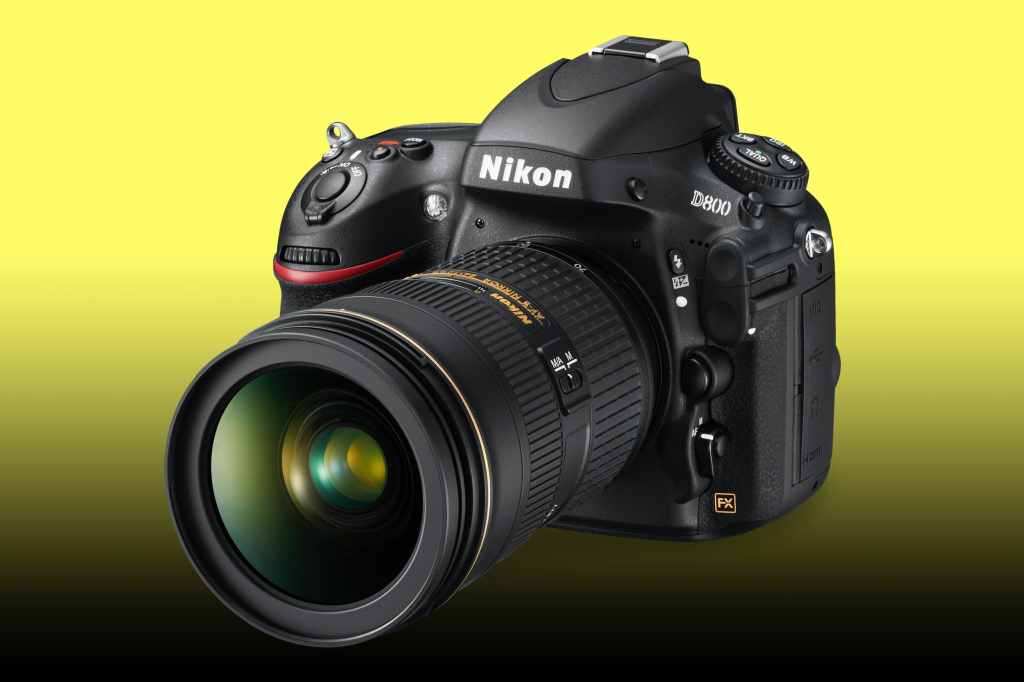
Amateur Photographer verdict
The D800 is a high-resolution full frame DSLR that features a bright LCD screen with 100% viewfinder field of view and an accurate AF system.- 36 MP full-frame sensor
- Superb noise reduction
- Only 4 fps continuous shooting
- Buffer can be slow at high-speed shooting
At a glance:
- 36.3MP full-frame CMOS sensor
- Nikon F lens mount
- 4fps continuous shooting
- ISO 100-6400 (exp. 50-25,600)
The big draw of the D800 upon its release in 2012 was its 36.3MP full-frame sensor. At the time, this was the highest resolution of any full-frame camera on the market. While that’s obviously no longer the case these days, the D800 remains a powerful camera with well above average resolution – more than enough for large-format printing.
For those seeking a high-resolution, full-frame DSLR without the associated high costs, a decent used D800 could well make for a solid and more affordable investment than the Nikon D810 or D850.
If you don’t need all those pixels, the D800 also offers a DX crop mode, shooting instead at a still-respectable 15.3MP. The autofocus system, borrowed from the sporty D4, has 51 points, 15 of which are cross-type, so it’ll do well with fast action. It launched with a body-only price of £2,599, but second-hand it can be found for as little as £420 in ‘good’ condition or better – or under £400 if you’re lucky.
Read our original review of the Nikon D800
Fast APS-C workhorse with powerful AF: Nikon D7500 – from $850 / £840

Amateur Photographer verdict
The D7500 is a solid all-round DSLR that combines ruggedness, speed and image quality. Launched in 2017, we think it has plenty of life in it yet.- Image quality up to high ISO settings
- Excellent autofocus using viewfinder
- Tilting screen
- Slow Live View autofocus
- Only a single SD card slot
- Lack of touch focus point selection when using viewfinder
At a glance:
- 20.9MP APS-C CMOS sensor
- Nikon F lens mount (APS-C)
- 8fps continuous shooting
- ISO 100-51,200 (exp. 50-1,640,000)
The Nikon D7500 has an impressive array of specs that includes shooting speeds up to 8 frames per second and a 51-point autofocus system that’s perfect for locking on to moving subjects. In terms of movies, the D7500 offers the options of 4K/UHD shooting at 30p or Full HD 1080p video at up to 60p.
The D7500 inherited its DX image quality from Nikon’s nominally more expensive D500 camera, so it’s worth comparing prices of the two. One thing to note is that the D7500, for whatever reason, only arrived sporting one card slot, even though previous entries in the D7000 series had two.
This particular blind spot of Nikon’s would return to mar the otherwise successful launch of the full-frame Z mirrorless line, the first of which inexplicably sported a single XQD card slot apiece.
Read our original review of the Nikon D7500
Full-frame EOS power-house: Canon EOS 5D Mark III – from $700 / £559

Amateur Photographer verdict
Low-light and high-sensitivity performance is excellent, autofocus is fast and reliable, plus it has all the advanced settings one would expect from Canon’s EOS-1D professional series of DSLRs.- 61 AF points
- Capable silent shooting feature
- 6 fps continuous shooting
- Rated only for 150,000 shutter actuations
At a glance:
- 22MP full-frame CMOS sensor
- Canon EF lens mount
- 6fps continuous shooting
- ISO 100-25,600 (exp. 50-102,800)
The Canon EOS 5D Mark III is an excellent full-frame camera that has thoroughly proven itself since its introduction in 2012. The 5D Mark III features a 22.3MP sensor and Digic 5+ processor, which together enable a native sensitivity range of ISO 100-25,600. In addition, there’s a 61-point autofocus system with 41 cross-type points (5 of which are diagonally sensitive) and maximum continuous shooting rate of 6 frames per second. That’s a nice combination for portrait photography, because it means you can target your subject’s eyes precisely and capture some movement if you wish to, rather than having to opt for static poses.
This camera was the first Canon DSLR capable of High Dynamic Range shooting, where three bracketed exposures are made and merged in-camera. And its Full HD video is excellent, continuing the tradition of the EOS 5D Mark II, which kick-started the DSLR revolution in professional video.
In terms of construction and build quality, the 5D Mark III is housed within a weather-sealed magnesium alloy shell and feels very much like a professional-grade DSLR should – a little weighty but incredibly solid.
Despite this, the 5D Mark III sits nicely in the hand thanks to its deep handgrip. Buttons are plentiful too, but also well-spaced and clearly labelled. Meanwhile, the in-camera menu offers plenty of advanced tools and customisation options that allow you to set the camera up exactly as you want it. The ergonomics on the EOS 5D Mark III are excellent across the board.
Second-hand prices do vary significantly. While £700 is at the upper end of what you might expect to pay for this camera, once you drop beneath this threshold, shutter actuations of used models tend to increase dramatically – you start seeing shutter counts of around 70,000 (the EOS 5D Mark III is rated to 150,000 actuations). If you plan to use the camera for a long time, it’s probably worth biting the bullet and paying for one with a lower count.
Read our original review of the Canon EOS 5D Mark III
Cheapest Nikon pro-spec APS-C DSLR: Nikon D500 – from $1,600 / £750
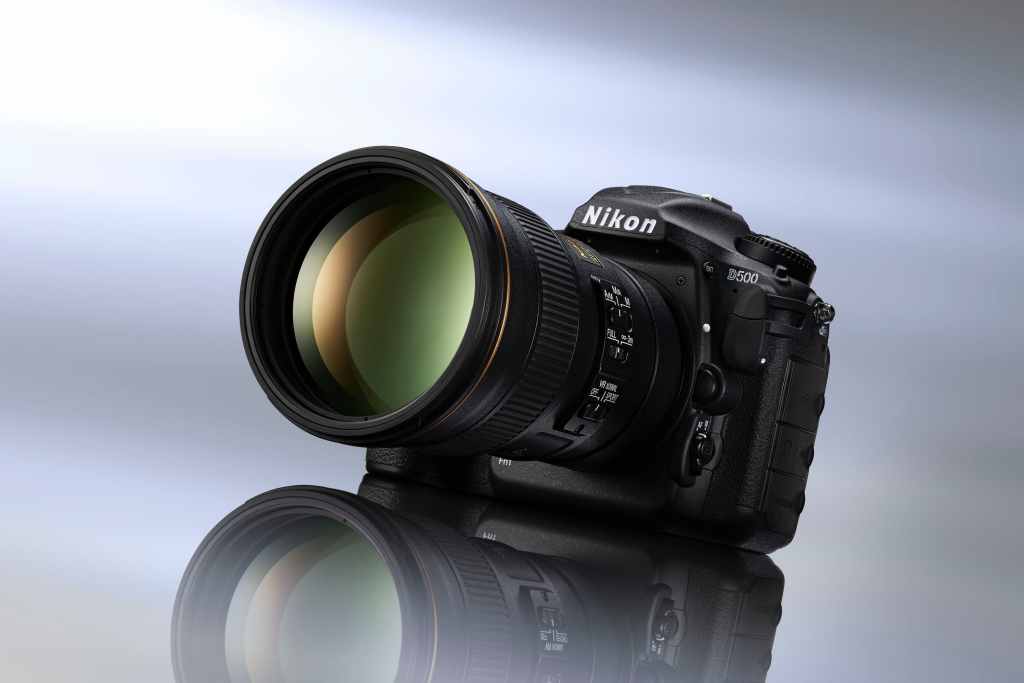
Amateur Photographer verdict
The Nikon D500 was Nikon’s fastest, most rugged and most powerful APS-C DSLR. High-speed shooting, continuous shooting and professional-level RAW buffer capacity are reasons to consider it even now.- 153 point AF system
- 4K video
- Tilting touchscrren
- Poor movie autofocus
- Bulky
- 1.5 crop in video
At a glance:
- 20.9MP APS-C CMOS sensor
- Nikon F lens mount (APS-C)
- 10fps continuous shooting
- ISO 100-25,600 (exp. 50-1,640,000)
While this pro-quality APS-C camera from 2016 is no longer cutting edge, it’s still remarkably well-featured. It can achieve an extended ISO range of 50-1,640,000, though noise performance is only tolerable up to around 51,200; it can shoot at 10fps and keep going for at least 30 frames in raw format, and 90 or more in JPEG mode with an SD card.
Put an XQD card in the second slot, and it’ll keep shooting full-speed for 200 raw frames. One of the most exciting features of the D500 for sports and wildlife photographers is that it has the same 153-point Multi-CAM 20K autofocus module as the D5 – a camera aimed at photographers who shoot sports events professionally.
This means that amongst the D500’s 153 AF points there are 99 cross-type AF sensors with the central one being sensitive down to -4EV and the other points are sensitive down to -3EV. The D500 is quite a common sight on the second-hand market, so it’s worth shopping around for a good deal.
Read our original review of the Nikon D500
Highest resolution Canon DSLR: Canon EOS 5DS R – from $1200 / £900
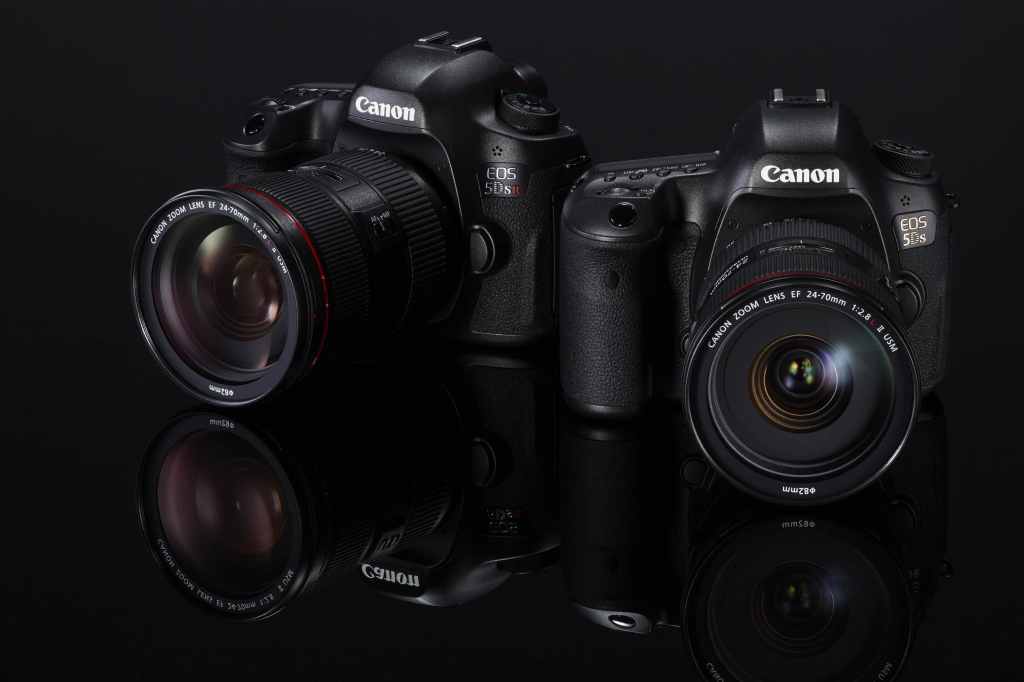
Amateur Photographer verdict
Image quality is superb. Landscape and studio photographers in particular will surely love the addictive level of detail that the 5DS R can deliver.- 50.6MP sensor
- Robust build quality
- Reliable metering and autofocus
- No articulating screen
- lower ISO dynamic range
At a glance:
- 50.6MP full-frame CMOS sensor
- Canon EF lens mount
- 5fps continuous shooting
- ISO 100-6400 (exp. 50-12,800)
The Canon EOS 5DS R is the priciest pick in our round-up, but when you consider that it launched with an RRP of £3,200, that second-hand price starts to look quite tasty. Launched as a pair with the Canon EOS 5DS in 2015, the EOS 5DS R represented a new frontier of DSLR resolution, boasting a sensor with a whopping 50.6MP at its disposal.
That’s still at the upper-end of full-frame resolutions today, and makes the EOS 5DS R a seriously tempting prospect for landscape photographers. Constructed to meet the needs of professional photographers, the Canon EOS 5DS R is built like a tank.
It’s designed in every way to make the most of all that detail, with a spring-less mirror assembly that minimises vibrations (which really do matter at 50MP), a reinforced tripod mount, and a USB 3.0 connection for fast image transfer.
Overall, for high-resolution photography, this is one of the savviest second-hand buys you can make.
Read our original review of the Canon EOS 5DS R
How to choose the best used DSLR?
Condition: For each camera, we’ve given a rough guide to the price you can expect to pay for one in ‘good’ condition or better. As a rule, this is a good level to stick to. Cameras listed as ‘well-used’ or ‘heavily used’ can be had for less, of course, but this is risky.
Sensor size: Should you go for a full frame or an APS-C model? APS-C DSLRs can take great images, but on the used market the price gap has narrowed, and you may be able to step up to the higher quality of a full frame DSLR without spending too much more cash.
Shutter count: With some DSLRs, it’s possible to check the number shutter actuations (i.e. how many times the shutter has been fired) – most DSLRs are rated for a life of somewhere between 150,000 and 300,000. While the vast majority can and will keep shooting long after they’ve passed their actuations rating, it’s still worth thinking twice before buying a camera with a high actuation count.
One more thing – our listings are accurate at the time of writing. The prices quoted are snapshots and, therefore, subject to change at any moment. The second-hand camera market is a fast-moving place! Snooze and you lose, as we say.
How we test DSLRs
We test DSLR cameras primarily by using them to take photographs and video in a wide range of real-world situations. We evaluate their control layouts and handling, and the usability of their viewfinders and screens. We assess their autofocus across a range of different subjects and shooting scenarios and check their continuous shooting capabilities.
We also examine the effectiveness of their image stabilisation systems if they have them built-in to the body, like in Pentax DSLRs. Last but by no means least, we critically evaluate the image quality, in both JPEG and raw, including resolution, high-ISO noise, and dynamic range. We then take all these factors into account, along with such things as portability and lens systems, when giving our final conclusion and score. You’ll find the full breakdown of how each camera has performed in our full reviews.
Related reading:
- How to get the best price for your used camera and lens
- Buyers guide to the best Canon DSLRs
- Buyers guide to the best Nikon DSLRs
Follow AP on Facebook, Twitter, Instagram, YouTube and TikTok.


